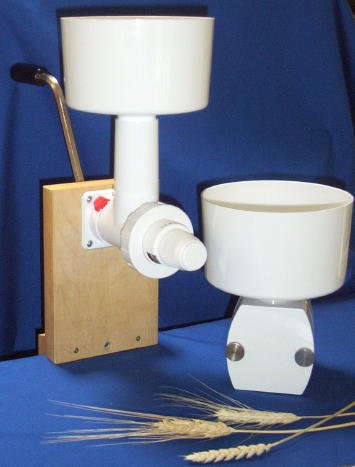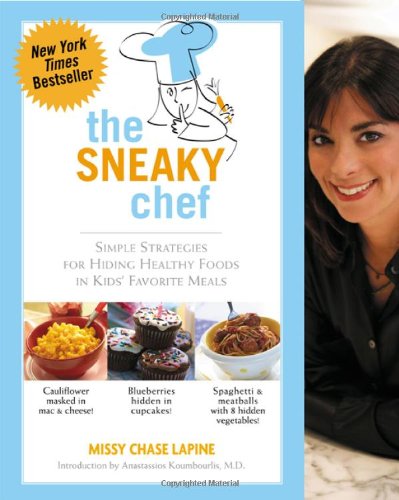Making Baking Healthier
This post contains affiliate links. That means if you click through and make a purchase, I make a few cents at no extra cost to you.
Photo courtesy of Brebca / 123rf.com
I don't know anyone who would argue that cookies and cakes are necessary food groups for a balanced diet. (Chocolate, on the other hand...)
In fact, when I first started making changes to a healthier diet, wheat-based products were the area where our family's menu took the biggest hit. I confess that this is also where I have personally struggled with the most confusion over the years. With all the conflicting information out there, it would seem easier to get all the Baptists of the world to unite than to find a unified theory of wheat consumption.
After all, does it make you fat or is it the "staff of life?" Why should you choose sprouted grains or sourdough instead of whole wheat? What makes unbleached better than plain old white flour? Why are there so many kinds of grains available now?
Covering the breadth of the "to-wheat-or-not-to-wheat" issue is beyond the scope of this post. (You can read this thoughtful review of Wheat Belly by William Davis for a ton of info in only a few pages.)
But even with all the conflicting information, I believe that baked goods can still be a nutritious alternative to store-bought processed foods.* Here is the outline of the philosophy I have embraced to judiciously incorporate delicious baked goodness into our family's diet over the years while still keeping as much nutrition in our calories as possible:
Get out of the dessert habit.
Breaking our dependence on refined foods is not as difficult as you might fear. Only have dessert after one dinner per week. Choose whole-food desserts like fruit served with Naturally Sweetened Whipped Cream or wheat-free goodies like these No Bake Coconut Balls most of the time--or no dessert at all. Limit the amount of wheat in your diet in general. This will help even out your blood sugar levels and reduce cravings so that this becomes easier over time.
Treat baked goods as a treat.
Most of us consume much more wheat and refined sugar than we should, which sets our blood sugar levels on a continual roller coaster that soon depletes our adrenal glands and pancreas and leaves us open to illness. Our bodies can handle an occasional spike in insulin if it is not a regular occurrence. According to William Davis, two slices of whole wheat toast spike our blood sugar as much as a can of pop. Imagine what a cinnamon bun does! Keep your sweet baked goodies to something that happens once in a while, not on a daily basis.
Make your own baked goods when you can.
When you control what goes into your snacks you can make healthy substitutions or even include extra hidden nutrition (see point 4 below) while skipping preservatives and nasties like High Fructose Corn Syrup.
When making baked goods, amp up nutrition with healthy substitutions.
There are all kinds of ways to both up the nutritional value of baked goods and reduce the detrimental effects. Here are a few of my favourite tricks:
Flour: Purchase wheat berries (direct from the farmer is most economical) and grind them as you need them. (A family food mill is an amazing long-term investment for both your time and your health.) Ground flour loses its vitamin content and goes rancid very quickly, so if you happen to have extra, store it in the freezer for next time. If possible, choose older, less modified forms of wheat like spelt or einkorn. When a recipe calls for white flour, substitute as much as possible with fresh-ground whole wheat, and use unbleached flour to make up the difference. (You may find you have to adjust the liquids down slightly to compensate for the fresh-ground flour.) I find that using 1/2 fresh-ground whole wheat and 1/2 unbleached flour does not detrimentally affect texture too much. For some things that need to be a bit fluffier, I use 1/3 whole wheat to 2/3 unbleached.
Sweeteners: Cut sugar quantities in most recipes in half as a baseline, then substitute natural sweeteners like whole brown sugar (Rapadura, Panela, unprocessed whole cane sugar, replace with equal measurement), maple syrup (which is chalk-full of nutrients, use half- to two-thirds the amount of sugar called for and alter liquids quantity down to compensate), or honey (if the item will not be heated**, replace sugar with equal measurement). Sweeten with puréed fruit (not juice) to reduce the sugar called for when possible.
Fats: Whole saturated fats are the best option. Stay away from heat-extruded, unstable polyunsaturated oils such as corn and peanut oil, and especially canola oil, which are all rancid before they even hit grocery store shelves. The best choices for baking are butter and coconut oil, which are both very stable fats packed full of nutrition like vitamin A and more. Serving baked goods with butter also improves the absorption of nutrients and regulates the blood sugar spike since healthy fats provide a more stable, slower-burning energy source than carbohydrates.
Extras: Sneak in extra nutrition with superfoods. Kids (and adults!) will eat stuff with chocolate chips they would never consider otherwise. (Make sure to use dark, semi-sweet chocolate chips to reduce sugar content.) Purée blueberries or cooked spinach and sneak them into chocolate cake. (The book The Sneaky Chef by Missy Chase Lapine has some great strategies for sneaking fruits and vegetables into all kinds of unexpected places.) Add hemp hearts, sunflower or pumpkin seeds into cookies or loaves. I think of cookies as "trail mix in a lump." Good enough to eat for breakfast!
Add cinnamon: Did you know that using cinnamon not only increases a recipe's sweetness but actually helps regulate blood sugar? Use freshly-ground for the most potent flavour.
As long as you keep these tips in mind, baking can be one more secret weapon in your arsenal for eating healthier.
Bon appétit!
*I am not a nutritionist. These statements are based on my research and personal experience and weighted heavily by the philosophy of using all things in an appropriate manner and in moderation. Note: Pay attention to your body. If you have symptoms as described in this article, you may need to remove wheat from your diet entirely to test for gluten sensitivity.
**Heating honey over 118 degrees F destroys the beneficial enzymes, so maple syrup is a better substitute when baking.
Products mentioned in this article.
(These are affiliate links, which means that if you purchase through them, you help feed my family.)
Recipe Exchange
Do have a recipe honed to perfection? Would you like to share?
Send it in and I will post recipes that follow the above "healthifying" guidelines on my blog with full credit going back to you as the creator. These posts will also be collected in a special "submitted recipes" section of my website.
Do you have a recipe you need help tweaking to make it healthier?
Send it in and I will "healthify" it as above, with credit given to you as the initial creator of the recipe when I post it on the blog.
This month's recipe themes: healthy baked goods and/or things with pumpkin or "pumpkin spice"
I can't wait to try your favourite treats!



